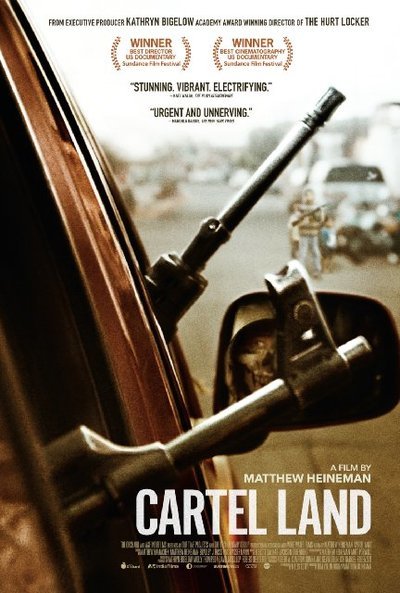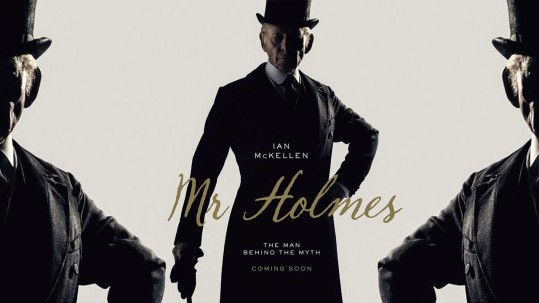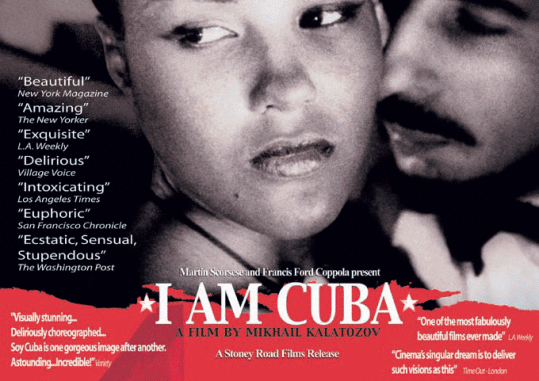Tags
""Autodefensa", "Cartel Land", "I Am Cuba", "Mr. Holmes", "Soy Cuba", 'El Doctro', Arizona Border Recon, Dr. Jose Mirales, Ian McKellan, Kathryn Bigelow, Knights of Templar, Laura Linney, Mathew Heineman, Mikhail Kalatozov, Milo Parker, Sherlock Holmes, Tim 'Nailer' Foley
We’ve seen three very different films over the past couple of weeks. Hopefully, at least one of the three may have interest for you.
Cartel Land ****1/2

Cartel Land tells two stories, both connected to the drug war that originates in and emanates from Mexico. One story involves a vigilante group (“Arizona Border Recon”) on the American side of the border lead by American war veteran Tim “Nailer” Foley. The other one involves Dr. Jose Mireles (“El Doctor”) who takes on the Knights of Templar drug cartel in Michoacan, Mexico.
Somehow, the documentary director, Matthew Heineman, was able to embed himself in both groups and let his camera (as opposed to any talking heads, etc.) tell the two stories.
Actually, the first story, while of interest, is really quite secondary to the heart of this unusual documentary. For me, the most fascinating aspect of the film is what took place over a period of a year in Michoacan.
Initially, it seems as if the fight against the cartel in Mexico is simply a good vs evil story, with Dr. Mirales’ movement, Autodefensa, leading townspeople to fight back against the drug traffickers. But nothing is quite that simple. By the end of the documentary, you know more than you ever did about how the drug world works in Mexico and why it is so difficult to combat it.
What is unusual about the treatment of this issue in Drug Cartel is how much of the conflict Heineman’s camera captures. With the assistance of Kathryn Bigelow (The Hurt Locker and Zero Dark Thirty), Heineman takes the audience where most of us have never been.
You may have to search out this documentary, but if it is available to you, it’s 98 minutes will leave you astonished. The production and content of this film are unique, and, I suspect, will stay with you long after you leave the theater.
Mr. Holmes ****

Not the Sherlock Holmes you’ve come to know and love. No hat, no pipe, no razor sharp mind, and none of his usual dazzling solutions to crimes that stump even the most clever of detectives.
Instead, we have an aging (90+ year old) Mr. Holmes who is struggling with his daily existence, particularly his memory, as he nears the end of his life and as he tries to write the story of the final case that led to his retirement.
What is most wonderful and entertaining about this Mr. Holmes is the splendid performance by Ian McKellan as the long-retired Sherlock Holmes. Supported by two very good performances (Laura Linney as the housekeeper and Milo Parker as her son), McKellan takes us with him as faces his declining health and as he attempts to recall (and solve) an unsolved case.
This film might appeal mostly to an older audience since an important part is about Holmes as an aging man, but it is also a tribute to the young as Holmes builds a relationship with a young boy he mentors (or maybe it’s the boy who builds his relationship with an older man).
In this film, taken from a book by Mitch Cullin, McKellan is a delight. Ellen says, “his performance is award potential.”
Soy Cuba (I Am Cuba) ***1/2
 A bit of background for this film is important.
A bit of background for this film is important.
In the early 1960s, not long after Castro had overthrown the Batista regime, Cuba and the Soviet Union set about to make a propaganda film to support the Cuban revolution. Mikhail Kalatozov (The Cranes Are Flying, & The Unsent Letter) made this film, but it was not well received by either the Cuban or Soviet public, and it disappeared for almost 30 years. When the Soviet Union fell apart, it was rediscovered, and, with the assistance of Martin Scorsese and Francis Ford Coppola, it was restored.
What is particularly memorable about Soy Cuba/I Am Cuba and what makes the film of interest is not the presentation of the reasons for the rise of Fidel Castro (rather heavy handed in its presentation of why the Batista regime was unfair and corrupt) but the cinematic technique. It is stunning. Filmed in high contrast black and white (to exaggerate the story) and with scenes that must have been shot in one take, the visual experience is stunning, not only for its time, but even for today.
While my knowledge of cinematography is quite limited, I was constantly fascinated by the images that appeared on the screen. Perhaps this film may have interest largely for those of you who know more about film making, but there is something certainly unique and memorable about Soy Cuba.
This is what we used to call an “art house” picture. Go for the enjoyment of the technique and dated propaganda efforts.


Jackie Reed said:
It was definitely the boy who developed the relationship with Holmes. Loved the movie!